 Carter Horsley
Carter HorsleyDec 13, 2017
Carter's Review
This elegant, 6-story building at 100 West 72nd Street on the southwest corner at Columbus Avenue occupies a very prominent site on the Upper West Side.
It was erected in 1893 for Park & Tilford, a luxury emporium offering fine foods, wines, perfumes, and delicacies.
It was designed by McKim, Mead & White.
It was converted in 1972 into 35 co-operative apartments and retail space on the ground floor.
Bottom Line
A very handsome 6-story, 19th Century building on a very prominent Upper West Side site and designed by McKim, Mead & White that was converted to 35 apartments in 1972.
Description
The Renaissance Revival-style building has rusticated masonry upper floors with three terra cotta bans and a neo-Classical frieze beneath its cornice that originally had a “pointy” top.
The base has large store windows between granite piers and the entrance was flanked by fluted Scamozzi columns and had a large circular window. According to the Ionic column entry at Wikipedia.com, “The 16th-century Renaissance architect and theorist Vincenzo Scamozzi designed a version of such a perfectly four-sided Ionic capital; Scamozzi's version became so much the standard, that when a Greek Ionic order was eventually reintroduced, in the later 18th century Greek Revival, it conveyed an air of archaic freshness and primitive, perhaps even republican, vitality.”
The chamfered corner provided additional light to the selling floors.
Amenities
The building has an intercom and a laundry.
Apartments
Apartment 6D is a two-bedroom duplex with a long entry foyer that leads past a 10-foot-long enclosed kitchen to a 25-foot-long living room on the lower level and two bedrooms and a 13-foot-long terrace on the upper level.
Apartment 3G is a one-bedroom unit with a double-height, 10-foot-long entry foyer that leads past an enclosed 8-foot-long kitchen to a 15-foot-long, double-height, living/dining room with a staircase to the bedroom and a 11-foot-wide closet on the upper level.
Apartment 4C is a one-bedroom duplex with a long entry foyer that leads past an open, 9-foot-long kitchen with a breakfast bar to a 19-foot long, double-height living room on the lower level and the bedroom on the upper level.
Apartment 6F is a one-bedroom duplex unit with an enclosed kitchen and a 22-foot-long living/dining room with a staircase on the lower level and a bedroom and a 14-foot-wide terrace on the upper level.
History
According to an article in the June 20, 2017 edition of Tom Miller’s wonderful daytonianinmanhattan.blogspot.com, John M. Tilford and Joseph Park opened Park & Tilford in a converted Federal-style house on Carmine Street in 1940 that “was the seed of what would be New York City’s finest grocery retailer.”
In 1892, Frank Tilford, John’s son, bought the site for this company’s fifth store in the city.
When it opened, The New York Times remarked "There is no business building more handsome on the west side" and the New-York Tribune called it "a decided architectural ornament to the neighborhood," Mr. Miller’s article continued, adding that the store “is as complete and perfect in every detail as the most exacting buyers can demand."
Mr. Tilford soon built a “palatial” mansion for himself across the street at 119 West 72nd Street.
The website then described an explosion in the building that occurred in 1909:
“Below the Park & Tilford store were a basement and sub-basement. Here behind-the-scenes work went on, like the candy-making shop. In July 1909 the Cold Storage and Ice Trade Journal reported that the firm had improved its ‘candy factory’ with a ‘10-ton Vesterdahl direct expansion refrigeration machine.’ The up-to-the-minute addition would have nearly-deadly consequences later. On the afternoon of December 17, 1916 six men working in the sub-cellar discovered a fire and pulled the alarm; but before they could reach the exits an ammonia tank to the refrigeration system exploded. The New-York Tribune reported ‘All managed to crawl to the stairs or elevators before collapsing. They were found by volunteers among their fellow employe[e]s and dragged to the street.’ As fire fighters responded, more ammonia tanks exploded. The first group of seven reached the sub-cellar with a line of hose, and then tried to retreat. ‘"All dropped before reaching the elevator,’ said the article. A second wave, from Hook & Ladder 40, headed towards the fire and came across them. But, ‘by the time they were hauled to the street most of their rescuers were overcome.’ Fire fighters worked in shifts, covering their faces with wet towels - half fighting the fire and the other half pulling stricken firemen to the street. Deputy Chief Burns finally refused to allow any more men to enter the building. It was new fire-fighting technology that saved the building. ‘Captain McElligott and his oxygen helmeted men worked their way into the smoke and fumes filled cellar with a line of hose, but it was a half hour before they had cleared the air sufficiently to permit the other firemen to enter.’ In the meantime, the Tribune praised Park & Tilford's emergency preparation and the discipline of the employees. ‘Almost 300 employes of Park & Tilford, scattered over six floors, gave an excellent demonstration of the fire drill system. Summoned by a series of signals, the employe[e]s, most of them women, formed in line and marched through the smoke and fumes without disorder to the street.’”
The building was sold in 1920 and five years later, it was renovated by architect Bernard Hersbrun, according to the website, “to what became known as the Papae Building,” adding that it now had “a bowling alley in the basement, stores on the first floor, and offices and meeting rooms above.” In 1932, the Boston Terrier Club of New York met there to elect its offices and the next year “the New York State Association or Retail Meat Dealers met to discuss a 48-hour work week and minimum wages, the website continued, adding that in1934 the Retail Druggists Association of New York and the Pharmacy Owners Association met there to compose a letter to Governor Herbert Lehman to permit the sale of liquor in drug stories.
On the night of March 12, 1934, a plainclothes patrolman raided a large space on the top floor and arrested 150 people in the audience, the management and the performers in “an indecent performance.”
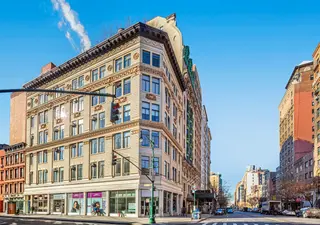
- Co-op built in 1893
- Converted in 1972
- 1 apartment currently for sale ($595K)
- Located in Broadway Corridor
- 35 total apartments 35 total apartments
- 10 recent sales ($520K to $2.4M)

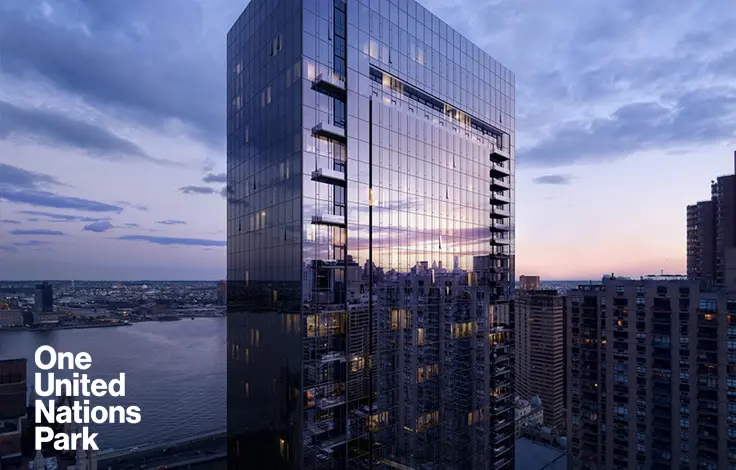
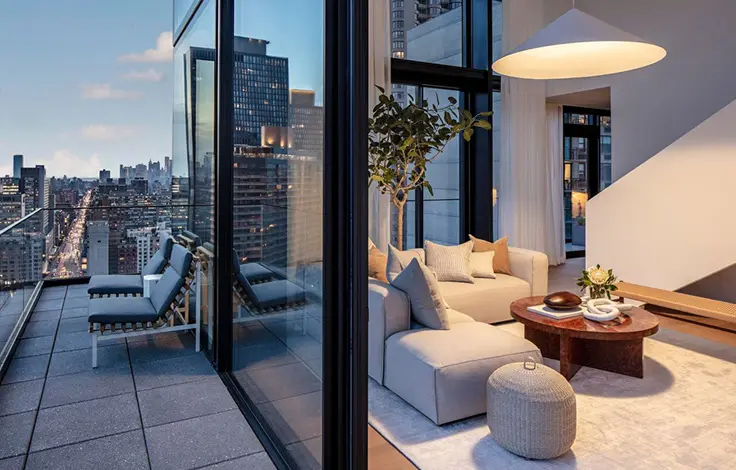
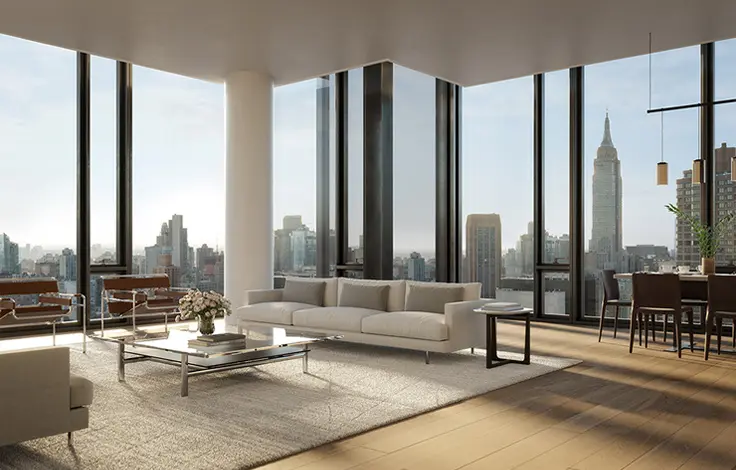

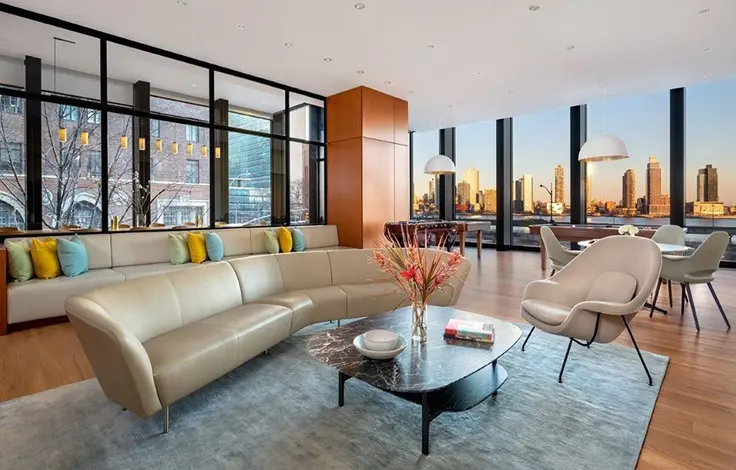
 6sqft delivers the latest on real estate, architecture, and design, straight from New York City.
6sqft delivers the latest on real estate, architecture, and design, straight from New York City.
